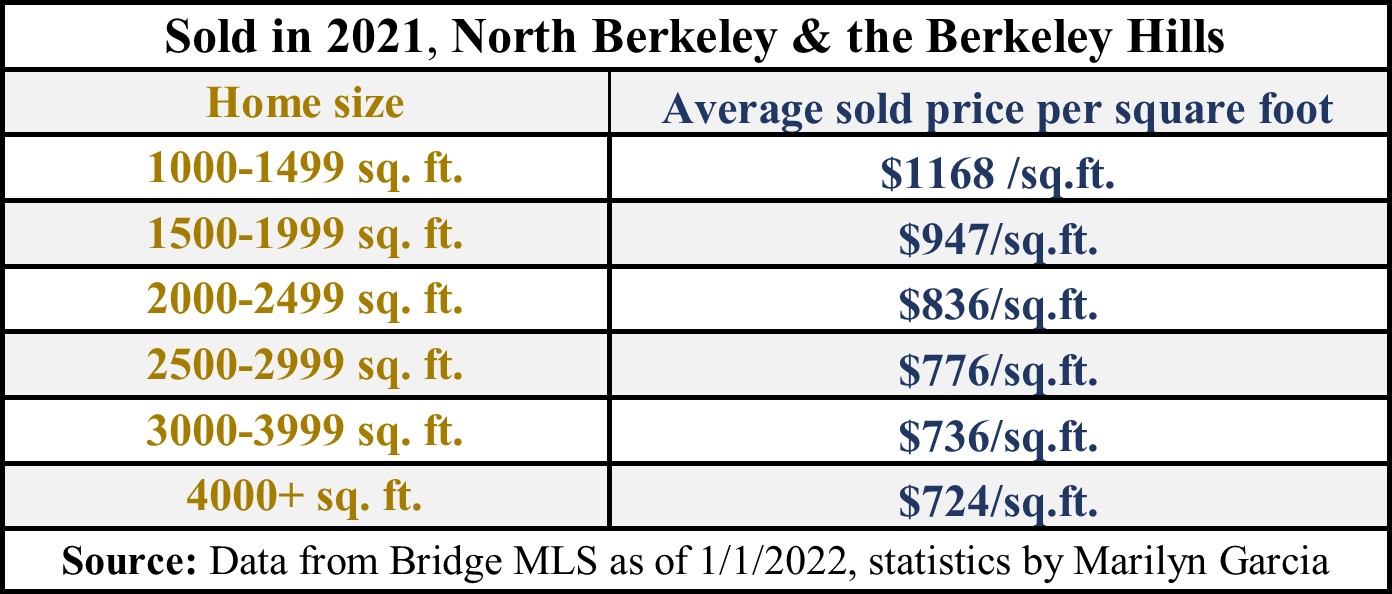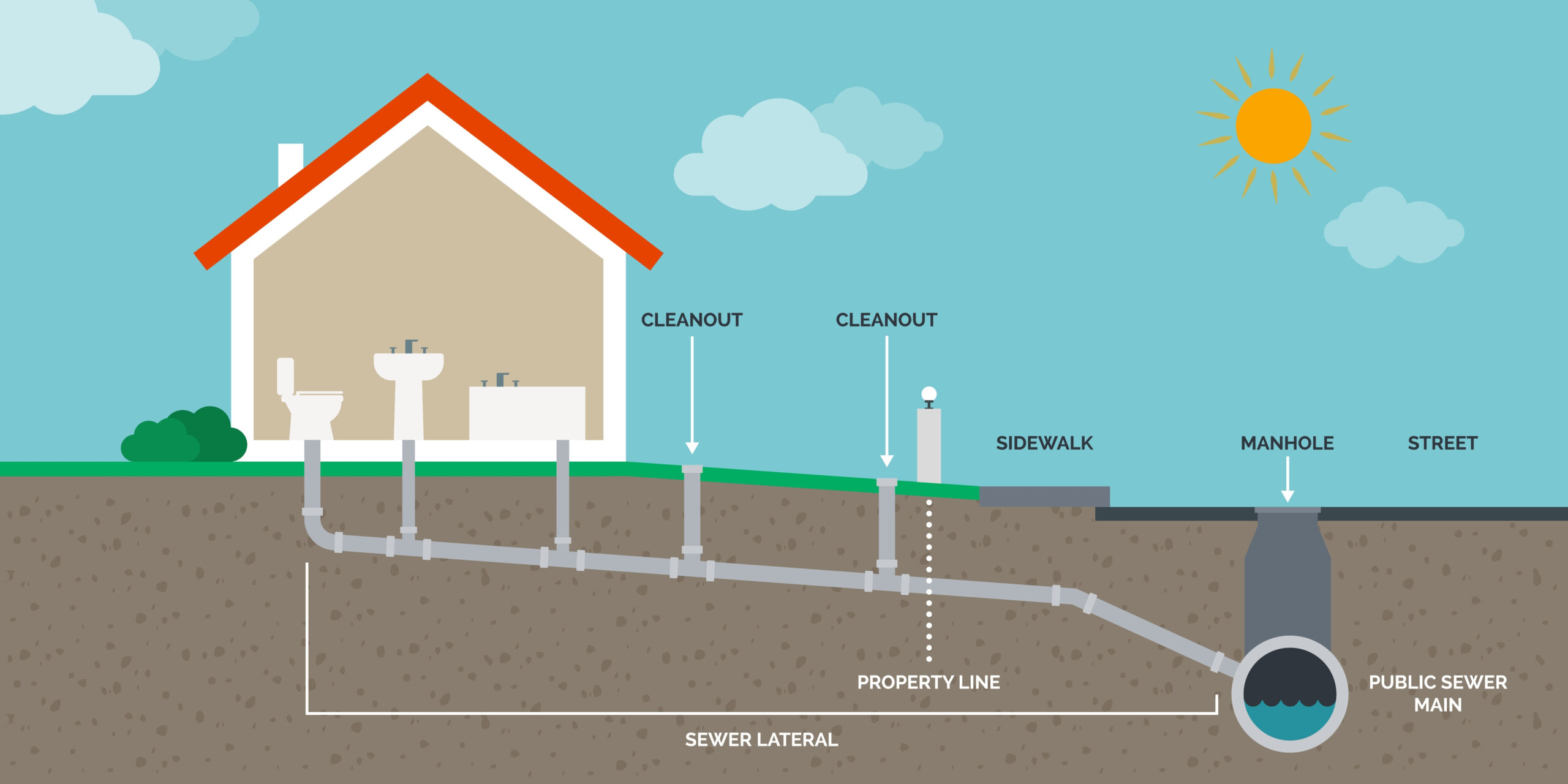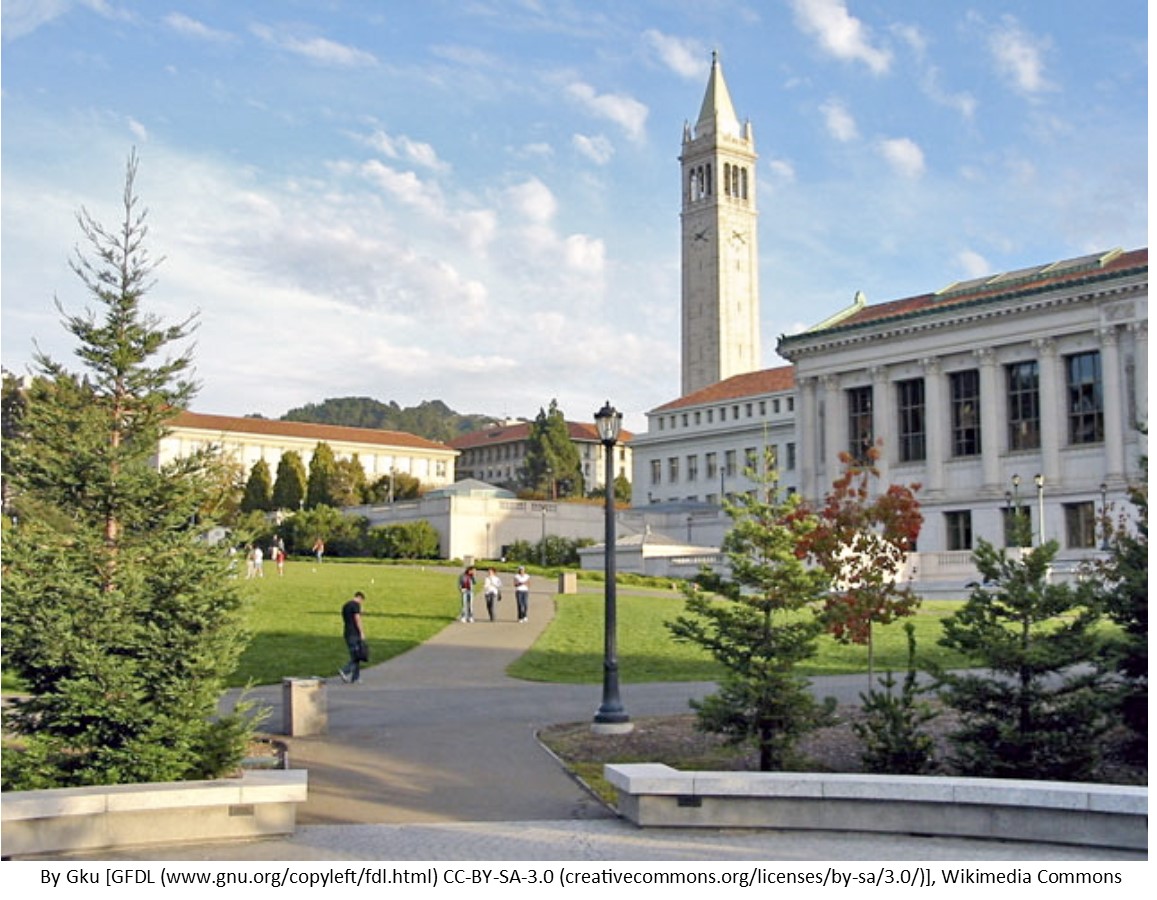Color of the Year
Color of the Year Design is an important aspect of my job, so I am always interested in color trends. These days, various companies, especially paint companies, annually announce one or more color(s) of the year. You can see a selection of these for 2024 here. (There are lots of interesting blues among them.) The most impactful color of the year is chosen by the Pantone Color Institute, which forecasts global color trends. They have been designating a “color of the year” since 1999, and they were the first to do it. Pantone’s color of 2024 is Peach Fuzz, which [...]
Mobile Driver’s License
Mobile Driver’s License Did you know that the California DMV has a mobile Driver’s License (mDL) pilot program running now, open to up to 1.5 million users? If you’re interested in giving it a try, start by downloading the free app called “CA DMV Wallet” from the Apple App Store, or from Google Play if you have an Android device, and then follow the straightforward instructions there. You create (or log into) your DMV account, enter some basic information, scan your driver’s license, and then “scan” your face (like you’re taking a selfie). Next you submit your request, and wait [...]
N11 Refresher
N11 Refresher Here’s a brief refresher on N11 quick-access phone numbers (where N is a number between 2 and 9) . 911 of course connects to a dispatcher for emergency services. Did you know, though, that if you call 911 on a cell phone, the call often ends up in a regional center, and then needs to be forwarded to more local help? If the call needs to be re-routed, this adds time to the process. This is not ideal in an emergency, so it’s a good idea to have your local, direct-access emergency number stored in your cell phone, [...]
More Recycling
More Recycling I started using a new paid recycling service called Ridwell in January, and I have to say, I have been loving it. Ridwell charges $14 to $18 per month (depending on the number of months you commit to), and comes to your house every two weeks to pick up items that our regular City recycling pickups don’t collect. They pick up plastic film (including most bubble wrap, grocery and newspaper bags, and the outer packaging on many items), batteries, light bulbs, and threads (clothing and other fabrics) every time, plus they have one additional special category on each [...]
REAL ESTATE ANSWERS: What design trends are you seeing now for kitchens?
What design trends are you seeing now for kitchens? Here are ten trends for kitchen design I have been seeing in publications and in our local market: Stark all-white kitchens are becoming less popular. People are looking for more warmth, which can come from materials or color. Unpainted wood cabinetry is increasingly popular; the grain and color of the wood add warmth and a natural element to the overall design. If cabinets are painted, we’re seeing less gray and less white, and more shades of blue, green, saffron, and ivory. The use of open shelving for storage is trending downward, [...]
Changes Afoot!
Changes Afoot! My 20-year anniversary in real estate has inspired me to look over my work systems and find ways to improve going forward. One area that I have re-vamped is the way I collect and analyze local market data. My goal has been to reformat my ongoing database to make it easier to create charts and graphs. I’m also going to start saving data for Berkeley as a whole, in addition to data for North Berkeley and the Berkeley hills. Another change: In the past, I have looked at real estate “seasons” that correspond with the level of activity [...]
REAL ESTATE ANSWERS: How has the negotiating environment changed as the market has shifted?
How has the negotiating environment changed as the market has shifted? When the real estate market is at its strongest, there is not a vast amount of negotiation between buyers and sellers. Buyers make strong offers in competition, often waiving the inspection contingency, and many sellers choose to accept the best offer, rather than negotiate and risk de-stabilizing the transaction. When the market is more balanced, there are fewer offers on properties, and buyers may not feel that they have to make their best offer at the start. An accepted offer might also have an inspection contingency, so there may [...]
REAL ESTATE ANSWERS: How much difference do higher interest rates make for home sales in our area?
How much difference do higher interest rates make for home sales in our area? Over the spring, the Federal Reserve announced a plan for multiple interest rate hikes this year to try to get inflation under control, and we’ve seen three rate increases already this year. As I write this, interest rates on home loans are approaching 6%, up from about 3% at the start of the year. Interest rates are at their highest level in 10 years, and there may be additional increases to come. Increasing rates make a lot of difference in the purchasing power of individual buyers. [...]
Bulky Waste and an E-Waste Resource
Did you know that, as a Berkeley homeowner, you can schedule one free bulky waste pick-up per calendar year? Just call (510) 981-7270 to schedule for an upcoming Wednesday. They’ll pick up a maximum of 3 cubic yards, which they say is the equivalent of about 20 large trash bags. Everything they pick up goes to the landfill, so be sure to separate out recyclables, green waste, and consider Urban Ore for items that can be re-used. Some things are not eligible for the bulky waste pick up. Included on the “not OK” list are things like hazardous waste items, [...]
Variations in Sold Price per Square Foot
If you are a regular reader of this newsletter, you have many times encountered the notion that, everything else being equal, the amount a property sells for per square foot of living space tends to be lower for large homes, and higher for small homes. To illustrate this point, I grouped the detached homes sold in North Berkeley and the Berkeley hills* over the course of 2021 by size category, and found the average sold price per square foot for each category. The results are above. As you can see, the pattern holds as a general rule: the larger the [...]
REAL ESTATE ANSWERS: Why are most sellers in our area no longer accepting “love letters” from buyers?
Why are most sellers in our area no longer accepting “love letters” from buyers? In our market, where buying a home is a super-competitive process, it used to be the case that buyers would include a “love letter” with their offer in hopes that it would influence the seller in their favor. The letter would tell the seller about the buyers, their qualifications, and why this property would be the perfect home for them. It also often included a photo of the buyers. The idea was that, because many (even most) sellers have some emotional attachment to the property they’re [...]
REAL ESTATE ANSWERS: Should I be careful not to over-disclose when I’m selling my home?
Should I be careful not to over-disclose when I’m selling my home? Completing seller disclosure forms in California can be a daunting task. A seller is legally obligated to disclose all known material information about the property to the buyer, and can be sued for hiding defects or problems. A material fact is any piece of information that would affect the buyer’s decision to purchase the property. To meet this obligation, sellers complete a series of detailed questionnaires about the current condition of the property, ongoing maintenance, past repairs and upgrades, and a whole array of other topics. Some of [...]
SEWER LATERALS AND DRAINAGE
Sewer Laterals and Drainage We’ve had a number of office discussions about water-related issues since the first “atmospheric river” passed our way, and I heard something about sewer laterals that I wanted to pass along. A sewer lateral is the underground pipe that takes wastewater from your home to the city sewer line. You probably know that when you sell a home in Berkeley, the sewer lateral needs to be brought up to current standards, either before or soon after a sale, unless there is a compliance certificate already on file. The reason this is a requirement is not to [...]
RESOURCEFUL
RESOURCEFUL I try to recycle as much as possible, but I pretty frequently find myself staring at something trying to figure out what to do with it. I recently downloaded the “Resourceful” app to my phone, and I really like it! [If a phone app is not your thing, you can get the same information online at ResourcefulApp.com.] On Resourceful, you can look at various products, and see recycling information that is specific to Berkeley, and also ideas for more sustainable alternatives. Resourceful also has a useful general guide to recycling in Berkeley. Here are a few tidbits about [...]
ARE YOU UNDER-INSURED?
ARE YOU UNDER-INSURED? The huge wildfires this year are a reminder that we should all periodically evaluate our insurance coverage, and make sure that we could rebuild if we ever needed to. Most insurance policies auto-renew each year, and the coverage may not keep pace with rising building costs. To get a very rough sense of the adequacy of your existing coverage, take your total coverage amount and divide it by the square footage of your home to calculate how much you would be able to spend per square foot if you had to rebuild. Experts say that $250-$300 per [...]
Home Loans, Interest rates, and Real Estate Newsletters
HOME LOANS AND INTEREST RATES x Interest rates on home loans have been very low lately! If your interest rate is close to, or above, 4%, it could be worth your while to contact your favorite loan person and see if you could benefit from refinancing your loan. x (See the update below.) Also, the limit on conforming loans (which can be sold to Fannie Mae and Freddie Mac) in our area was increased for 2020 to $765,600, up from $726,525 last year. Loans below that limit often have lower interest rates than those above. UPDATE, March 20, 2020 While [...]
Bridge Loans
BRIDGE LOANS Did you know that it’s possible again to get a bridge loan? A bridge loan is a short-term loan that can be used to access the equity in a home you are planning to sell in order to purchase a new home. Following the financial crisis in 2008, lending standards got extremely strict, and bridge loans vanished from the market. Non-cash buyers who wanted to buy a new home before selling their old one needed to either (1) show that they had enough income to make payments on the loans on their existing home and on their new [...]
Emergency Alerts
EMERGENCY ALERTS Have you signed up yet for Alameda County emergency alerts? The system is called AC Alert, and it’s very easy to sign up to receive notifications from city and county agencies in the case of an emergency. Just go to ACalert.org online, and you can sign up to receive notifications by voice message, text message and/or email. The City of Berkeley previously used an alert system called BENS, but this system is no longer active, and subscribers to BENS are not automatically signed up for AC Alert. There are other alert systems that have slightly different focuses. I [...]
UC BERKELEY: MORE ACCOLADES!
We already know that UC Berkeley is one of the top universities in the world, but I still love to see it getting the recognition it deserves. In the latest rankings of graduate programs by US News & World Report, there were many Cal programs that were among the top-rated. Cal was ranked #1 (or tied for #1) in Biological Sciences, Computer Science, English, Psychology and Sociology. I was especially excited to see the graduate program in Economics (which is where I got my PhD) also tied for the #1 position! Other Cal graduate programs that ranked in the top [...]
FREE STUFF (How to give it away)
I am a big fan of a good purge, and the new year is a great time to get rid of unwanted stuff. At the same time, I hate to throw anything away that someone else might be able to use, and non-profit donation centers only take certain items. For things that can’t be donated, I give them away using Freecycle, Next Door or Craigslist. I don't want to just leave things at the street until someone takes them -- it's unsightly, and the items can get dirty, or wet. I often don’t have time to coordinate schedules with people [...]
Go UC!
Money magazine just released their latest ranking of colleges and universities, and the University of California got 5 of the top 11 spots! Wow! To come up with the rankings, Money combines measures of “Quality of Education” (based largely on graduation rates), “Affordability” (net costs after financial aid, borrowing, time to graduation and student loan repayment rates) and “Outcomes” (measured mostly by alumni salary data). UC San Diego ranked 2nd overall, after only Princeton University. UC Irvine was 3rd, UCLA came in 4th, UC Berkeley was 7th, & UC Davis was ranked #11. One can definitely quibble about the order, [...]
Home Project Website
https://www.homewyse.com/ I saw a mention of the website above in a Money magazine article about home improvement projects, so I checked it out and thought it was worth passing along. It's a price calculator for home renovation and maintenance projects. You select a project, make some choices about the scope of the work, the quality of the materials and the type of contractor, enter your zip code, and they give you a rough estimated range for the cost. I found this really interesting. I cannot vouch for the accuracy of their numbers, but there is information about their methodology and sources on [...]
Color of the Year
Color of the Year
Design is an important aspect of my job, so I am always interested in color trends. These days, various companies, especially paint companies, annually announce one or more color(s) of the year. You can see a selection of these for 2024 here. (There are lots of interesting blues among them.)
The most impactful color of the year is chosen by the Pantone Color Institute, which forecasts global color trends. They have been designating a “color of the year” since 1999, and they were the first to do it. Pantone’s color of 2024 is Peach Fuzz, which they say “captures our desire to nurture ourselves and others. It’s a velvety gentle peach tone whose all-embracing spirit enriches mind, body and soul.” You can see it here.
Why do we care? These color selections definitely impact the retail and design world. You’ll see clothing, housewares, packaging, and lots more, in some form of Peach Fuzz this year. For real estate, you might see stagers adding accents to their inventories in similar colors, and there might be a shift towards compatible colors. It can be fun to update some home accents to follow a current trend, but always keep in mind that there will be a new “it” color next year, so I recommend sticking to something more classic for big, long-lasting items (exterior house color, major appliances, etc.).
Mobile Driver’s License
Mobile Driver’s License
Did you know that the California DMV has a mobile Driver’s License (mDL) pilot program running now, open to up to 1.5 million users? If you’re interested in giving it a try, start by downloading the free app called “CA DMV Wallet” from the Apple App Store, or from Google Play if you have an Android device, and then follow the straightforward instructions there. You create (or log into) your DMV account, enter some basic information, scan your driver’s license, and then “scan” your face (like you’re taking a selfie). Next you submit your request, and wait a few business days while it’s processed.
This idea of a digital ID card sounds cool to me, but it is not very useful at this point. You are still required to carry your physical driver’s license and present it if asked. For now, you can use the mDL at some (but not all) TSA Pre-Check lines, including SFO’s Terminal 3. (See https://www.tsa.gov/digital-id for a list of participating airports.) You can also activate “TruAge” within the DMV Wallet, and in theory use it to buy age-restricted items (alcohol, tobacco products, etc.) without sharing personal information such as your address. TruAge, though, is so far only accepted at a few Circle K convenience stores in the Sacramento area.
I suspect this sort of ID is the wave of the future, like the European Union’s Digital Identity Wallet, but for now it’s just a novelty here. I did sign up, just to check it out!
N11 Refresher
N11 Refresher
Here’s a brief refresher on N11 quick-access phone numbers (where N is a number between 2 and 9) .
911 of course connects to a dispatcher for emergency services. Did you know, though, that if you call 911 on a cell phone, the call often ends up in a regional center, and then needs to be forwarded to more local help? If the call needs to be re-routed, this adds time to the process. This is not ideal in an emergency, so it’s a good idea to have your local, direct-access emergency number stored in your cell phone, so you can access a local dispatcher without that extra step. In Berkeley, that phone number is 510-981-5911. (Save this in your cell phone!)
The other N11 numbers are used for the following:
211: Referrals to services for housing, seniors, transportation, etc.
311: General city customer service
411: Local directory assistance
511: Traffic and transportation information
611: Phone company customer service
711: Relay service for the speech and hearing impaired
811: “Call before you dig,” providing information on the location of buried utilities.
Also, it’s not an “N11,” but there is one more important quick-dial number: 988 will take you to the National Suicide Prevention Lifeline.
More Recycling
More Recycling
I started using a new paid recycling service called Ridwell in January, and I have to say, I have been loving it. Ridwell charges $14 to $18 per month (depending on the number of months you commit to), and comes to your house every two weeks to pick up items that our regular City recycling pickups don’t collect. They pick up plastic film (including most bubble wrap, grocery and newspaper bags, and the outer packaging on many items), batteries, light bulbs, and threads (clothing and other fabrics) every time, plus they have one additional special category on each pickup day. Check out ridwell.com for details.
I was amazed, and appalled, to see how much plastic film passed through my house, once I started collecting it to be recycled. I feel better knowing that it is at least being recycled (Ridwell ships it to a factory that makes Trex decking). The whole experience has made me pay much more attention to packaging, since yes, reducing the amount I use is even better than recycling it.
With Ridwell, you’re paying for the convenience of having them pick up the items. You can, though, recycle or donate the same things without paying Ridwell to pick them up. Many grocery stores will take plastic film (see bagandfilmrecycling.org for a list), Berkeley Recycling (at 2nd and Gilman) accepts unbroken fluorescent light bulbs and batteries, and there are also various places to donate clothing and other items.
REAL ESTATE ANSWERS: What design trends are you seeing now for kitchens?
What design trends are you seeing now for kitchens?
Here are ten trends for kitchen design I have been seeing in publications and in our local market:
- Stark all-white kitchens are becoming less popular. People are looking for more warmth, which can come from materials or color.
- Unpainted wood cabinetry is increasingly popular; the grain and color of the wood add warmth and a natural element to the overall design.
- If cabinets are painted, we’re seeing less gray and less white, and more shades of blue, green, saffron, and ivory.
- The use of open shelving for storage is trending downward, as people factor in the impracticality and required upkeep. Some open shelving for display space rather than everyday use is still popular.
- Fancy statement-making range hoods are less popular, with more people opting for something simpler to fit in with a clean aesthetic.
- Countertop materials can go in two directions: we’ve been seeing more natural stone with color and patterns of flowing wavy movement, but a clean, simple quartz is also popular. Which of these makes sense in a design depends on the surrounding elements. Is the stone the statement piece in an environment that is otherwise clean and simple, or are there surrounding elements (wood grain on cabinets, or pattern on the backsplash or flooring) with which you don’t want to compete?
- Solid slab backsplashes, generally in the same material as the counters, are becoming more popular.
- Microwaves over the range are feeling dated.
- The trend from last year toward more natural materials like rattan or rope is continuing. In the kitchen, we see it on pendant lights and seating.
- For hardware, last year we saw a lot of matte black for faucets, cabinet handles and lights. Brass or gold finishes have also been popular for these items. These finishes have not gone away, but designers say that polished chrome is coming back, which is always a good classic choice.
Kitchens are an important component of property value, so it’s a good idea to consider how long you are expecting to be in the house if you are planning a remodel.
If you are going to sell the property fairly soon, you’ll get the best return if you factor in current trends. As the time until you’ll want to sell gets longer, the more it makes sense to choose more classic and neutral finishes for the big-ticket and harder-to-change components. Beyond a certain point though (20 or 30 years?) anything you choose today is likely to feel dated by the time you sell, so you can feel free to go for whatever you like the most!
Changes Afoot!
Changes Afoot!
My 20-year anniversary in real estate has inspired me to look over my work systems and find ways to improve going forward. One area that I have re-vamped is the way I collect and analyze local market data. My goal has been to reformat my ongoing database to make it easier to create charts and graphs. I’m also going to start saving data for Berkeley as a whole, in addition to data for North Berkeley and the Berkeley hills.
Another change: In the past, I have looked at real estate “seasons” that correspond with the level of activity we see in the local market. The winter season was defined as December through February, corresponding to the slowest time of the year in our market, and spring (March through May) corresponds with the busiest. Going forward, I am going to instead focus on quarters as traditionally defined. So instead of winter (December, January, February), I’ll track and discuss Quarter 1 (January, February, March), and so on. Since real estate transactions take weeks to close, roughly half the properties that go into escrow in one month close (and show up in the sale data) the following month. This means that switching to quarters won’t make a big difference conceptually, and there are benefits to using quarters in terms of chartmaking and recordkeeping.
REAL ESTATE ANSWERS: How has the negotiating environment changed as the market has shifted?
How has the negotiating environment changed as the market has shifted?
When the real estate market is at its strongest, there is not a vast amount of negotiation between buyers and sellers. Buyers make strong offers in competition, often waiving the inspection contingency, and many sellers choose to accept the best offer, rather than negotiate and risk de-stabilizing the transaction. When the market is more balanced, there are fewer offers on properties, and buyers may not feel that they have to make their best offer at the start. An accepted offer might also have an inspection contingency, so there may be further negotiations during the inspection period.
Most real estate negotiations are over dollar amounts (although timing and other terms can also be negotiated), but the same dollars can be factored into a contract in different ways: as a change in price, as a change in who is paying various closing costs, as a credit towards closing costs for the buyer, or as a buy-down of the buyer’s interest rate by the seller. Each of these possibilities affects the buyer’s and seller’s bottom lines differently, so a strong, creative negotiation strategy weighs the effects of each to find the right one or the right mix.
From a financial perspective, the seller’s goals are relatively simple. Sellers want to maximize their net proceeds, so they want the price as high as possible, and their costs as low as possible. The buyer side is much more complicated. Buyers want to minimize their cost for the purchase, so to keep the sale price and their closing costs as low as possible. Buyers also want to minimize their ongoing costs of ownership: their loan payments (if any) and their annual property taxes. In addition, buyers will consider the available cash they will have after the purchase to make needed repairs or improvements.
When I am negotiating for a seller client, my first step is aways to gather as much information as possible about the buyers and their circumstances. Are they getting a loan? Will they have plenty of cash on hand after the purchase for needed repairs? Is the monthly cost of ownership their primary constraint, or do they ultimately care the most about the overall purchase price? Will their lender allow credits toward closing costs? How much will a point paid on their loan reduce their monthly payment? Using that information, I can then consider all the various ways to structure potential contract changes, to find an option that will be the most attractive to the seller, while making the deal work for the buyer.
It is all quite complex, but it’s an important part of the process. One of the benefits of longevity in this business is having experience navigating markets of all different strengths. I guess that makes up for the extra wrinkles the years have also brought me!
REAL ESTATE ANSWERS: How much difference do higher interest rates make for home sales in our area?
How much difference do higher interest rates make for home sales in our area?
Over the spring, the Federal Reserve announced a plan for multiple interest rate hikes this year to try to get inflation under control, and we’ve seen three rate increases already this year. As I write this, interest rates on home loans are approaching 6%, up from about 3% at the start of the year. Interest rates are at their highest level in 10 years, and there may be additional increases to come.
Increasing rates make a lot of difference in the purchasing power of individual buyers. For sellers and property values in our market, where we have excess demand, the impact is not as extreme, but it does definitely affect the market.
Consider individual buyers who are qualified for at most a $1 million dollar home loan (to choose a round number) when interest rates are 3%. This means that they are qualified, given their income and other debts, for a maximum monthly loan payment of $4216. When rates go up to 6%, assuming the buyers can afford that same payment, they now only qualify for a loan of $703K (so they can spend $297K less on a home, compared to when rates were at 3%). As a very rough rule of thumb, the maximum loan amount people can qualify for goes down about 10% each time the interest rate goes up by one percentage point.
Another way to think about this – a particular buyer might need something like $230K of household income to qualify for a $1M home loan when the interest rate is 3%. (The actual income requirement will depend on things like credit rating, other debt, etc.) When the interest rate rises to 6%, that same buyer would now need over $300K in income to qualify.
How do buyers respond to increasing interest rates? With less purchasing power, buyers need to adjust their expectations. They could look for a smaller home, a less expensive location, or a home that needs more repairs or improvements. Other buyers, who were not already planning to spend their max, might decide to go closer to their limit, and still buy the same thing.
In thinking about how higher interest rates affect our market as a whole, the crucial question is, will there be fewer buyers at particular price points after all this happens? In our market, we have had an excess of buyers at various price points, and a good number of cash buyers as well. Some buyers will need to move down a price category, but there should be other buyers (moving down from higher price points) to take their place. And yes, some buyers will be unwilling to compromise on their purchase and may choose not to buy now at all.
Overall, I would expect there to be somewhat fewer buyers in each price point. There was so much excess demand before, though, that there should still be enough buyers out there to keep the market stable.
Bulky Waste and an E-Waste Resource
Did you know that, as a Berkeley homeowner, you can schedule one free bulky waste pick-up per calendar year? Just call (510) 981-7270 to schedule for an upcoming Wednesday. They’ll pick up a maximum of 3 cubic yards, which they say is the equivalent of about 20 large trash bags. Everything they pick up goes to the landfill, so be sure to separate out recyclables, green waste, and consider Urban Ore for items that can be re-used.
Some things are not eligible for the bulky waste pick up. Included on the “not OK” list are things like hazardous waste items, mattresses and large appliances, tires, auto parts, and items (other than sofas) that are more than 5’ long or 50 pounds in weight. They also do not take electronic waste, but there is a non-profit that does.
The Ewaste Collective, located at 620 Page Street, is a non-profit committed to household electronics and computer recycling (ewastecollective.org). They accept monitors, TVs, computers, keyboards, cell phones, tablets, wires & cables, microwaves and toasters, printers, scanners, fax machines, game consoles and games, and more. This is a great resource, not only because you can be confident that your electronic waste is being handled properly. They also refurbish computers and give them away to those in need. Your drop-off may be tax deductible, and they will wipe the memory of your computer for a $10 fee.
Variations in Sold Price per Square Foot
If you are a regular reader of this newsletter, you have many times encountered the notion that, everything else being equal, the amount a property sells for per square foot of living space tends to be lower for large homes, and higher for small homes. To illustrate this point, I grouped the detached homes sold in North Berkeley and the Berkeley hills* over the course of 2021 by size category, and found the average sold price per square foot for each category. The results are above.
As you can see, the pattern holds as a general rule: the larger the home, the lower the sold price per square foot, everything else being equal. For specific properties though, everything else isn’t equal, and characteristics such as a large lot, architectural pedigree, views, etc., still push up the value in general, and in price per square foot.
REAL ESTATE ANSWERS: Why are most sellers in our area no longer accepting “love letters” from buyers?
Why are most sellers in our area no longer accepting “love letters” from buyers?
In our market, where buying a home is a super-competitive process, it used to be the case that buyers would include a “love letter” with their offer in hopes that it would influence the seller in their favor. The letter would tell the seller about the buyers, their qualifications, and why this property would be the perfect home for them. It also often included a photo of the buyers.
The idea was that, because many (even most) sellers have some emotional attachment to the property they’re selling, providing more information about the buyers and how much they appreciate the property could highlight commonalities and make it easy for the sellers to picture a particular set of buyers as the new owners. Maybe the seller would think “Oh, these buyers are a cute young couple who want to raise their family here like we did!” Or, “Look, we both work for X Company!” Or “These people love to garden, so will maintain the yard I put so much effort into!” Buyers hoped that these commonalities might lead the seller to choose their offer over others (maybe even if their price wasn’t quite as high).
The problem with these letters is that they can reveal information about the buyers that the seller cannot legally consider in choosing between offers.
Sellers are prohibited by law from choosing a buyer based on any of these criteria: race, color, ancestry, national origin, religion, sex, sexual orientation, gender, gender identity, gender expression, marital status, familial status, source of income, disability, medical condition, citizenship, primary language, immigration status, military/veteran status, age, criminal history, and any arbitrary determination.
Notice that my “cute family” example above is on the list of prohibited criteria (familial status), and “We both work for the same company” is related to source of income.
Even the best-intentioned seller, who would never knowingly violate Fair Housing laws, could be subconsciously influenced, and even if this is not the case, it is still safer as a seller to not have information related to the prohibited criteria at all. In our super-competitive market, there are routinely multiple unsuccessful buyers, and there is always the risk that an unhappy buyer whose offer was not accepted could claim that a decision was influenced by something that is in a protected category.
The safest choice is to “just say no” to buyer letters. If you as the seller do not have information the about buyers’ characteristics, it’s hard for someone to say that you made a decision for the wrong reasons. I think skipping the buyer letters is not just the safest choice, but it’s also the right choice, because it levels the playing field for everyone.
REAL ESTATE ANSWERS: Should I be careful not to over-disclose when I’m selling my home?
Should I be careful not to over-disclose when I’m selling my home?
Completing seller disclosure forms in California can be a daunting task. A seller is legally obligated to disclose all known material information about the property to the buyer, and can be sued for hiding defects or problems. A material fact is any piece of information that would affect the buyer’s decision to purchase the property. To meet this obligation, sellers complete a series of detailed questionnaires about the current condition of the property, ongoing maintenance, past repairs and upgrades, and a whole array of other topics. Some of the questionnaire forms are specifically required by the state or federal government, and the others are like a guided walk down memory lane, making sure sellers think about and pass along information within many different relevant categories.
In completing these forms, it’s not uncommon for a seller to worry that they’re over-disclosing – telling the buyer too much – and that they’re going to hurt their sale. My general rule of thumb for disclosures is this: If you wonder if you should include something in the disclosures, the answer is always yes. Why? Because if it’s an item that the buyer cares about, then it’s a material fact, and you are required to disclose it. If the buyer doesn’t care, then it’s not hurting anything to have it there.
Carefully completed disclosures are important not just because of the legal requirement, but also because they set the tone for the transaction, and establish a baseline level of trust between the parties. If the seller has lived in the property for many years, but discloses next to nothing, buyers don’t feel confident that they’re getting an accurate picture of the property, which makes them worry about unknown problems. They may also think the seller is not playing fair, which affects their impression of the whole property, and their behavior in the transaction, including their willingness to be flexible when procedural things come up during escrow (and procedural and other issues often do come up!).
Disclosure forms include questions that ask you to describe all work and improvements you’ve done on the house, plus repairs needed now and those done in the past, plus ongoing maintenance. Putting together all of this information can be challenging, especially if you’ve owned the home for many years. Including a lot of detail, though, especially about more recent improvements and repairs, gives the buyer the sense that the property has been well-maintained and improved over time.
Even if you’re not thinking of selling anytime soon, it will make your life much easier when the time comes if you start a list (or a spreadsheet, or a file) now, and update it when you have a new improvement or repair. For each item, record three things: what was done, who did it, and when. For recurring maintenance items, there’s no need to keep track of every time the tree trimmer or gutter cleaner came; just keep a list of what those maintenance items are. If you start doing this now, you’ll be way ahead of the game when you do decide it’s time to sell!
SEWER LATERALS AND DRAINAGE
Sewer Laterals and Drainage
We’ve had a number of office discussions about water-related issues since the first “atmospheric river” passed our way, and I heard something about sewer laterals that I wanted to pass along.
A sewer lateral is the underground pipe that takes wastewater from your home to the city sewer line. You probably know that when you sell a home in Berkeley, the sewer lateral needs to be brought up to current standards, either before or soon after a sale, unless there is a compliance certificate already on file.
The reason this is a requirement is not to address waste leaking from the laterals into the ground. Instead, the issue they’re targeting is rainwater entering through cracks in older sewer laterals, which is then carried to the wastewater treatment plant, where it can overwhelm the system.
At a recent office meeting, John Karnay (one of the owners of the Grubb Company) pointed out that some old, cracked sewer laterals could be functioning as de-facto French drains, letting rainwater in and carrying it away from the property. If that was the case, when the lateral is replaced, that drainage channel would be gone (because the rainwater can’t get in when the pipe is no longer cracked), and so it’s possible some properties with new laterals could see water building up in new places.
This is mostly theoretical, but it’s not a bad idea to keep an eye on your property’s drainage for a while after the sewer lateral has been replaced.
RESOURCEFUL
RESOURCEFUL
I try to recycle as much as possible, but I pretty frequently find myself staring at something trying to figure out what to do with it. I recently downloaded the “Resourceful” app to my phone, and I really like it! [If a phone app is not your thing, you can get the same information online at ResourcefulApp.com.]
On Resourceful, you can look at various products, and see recycling information that is specific to Berkeley, and also ideas for more sustainable alternatives. Resourceful also has a useful general guide to recycling in Berkeley. Here are a few tidbits about Berkeley recycling I picked up from the app:
(1) You should not put things smaller than your fist (approximately) in the recycling bin, because they can’t be sorted. However, caps to plastic bottles, if attached to the bottle, are okay.
(2) Compostable plastic (labeled #7, PLA, or compostable) needs to go into the compost bin, rather than the plastic recycling bin. If it gets mixed into the regular bin, it can contaminate the batch.
(3) Anything that consists of mixed material (like a disposable razor that’s plastic and metal) is not recyclable.
(4) Paper towels with food on them can go in the compost, but a paper towel with Windex or other non-compostable cleaning product on it has to go in the trash.
ARE YOU UNDER-INSURED?
ARE YOU UNDER-INSURED?
The huge wildfires this year are a reminder that we should all periodically evaluate our insurance coverage, and make sure that we could rebuild if we ever needed to. Most insurance policies auto-renew each year, and the coverage may not keep pace with rising building costs.
To get a very rough sense of the adequacy of your existing coverage, take your total coverage amount and divide it by the square footage of your home to calculate how much you would be able to spend per square foot if you had to rebuild. Experts say that $250-$300 per square foot is the minimum likely cost to rebuild in our area, so I would want to have at least that much coverage.
Also check to be sure that you’ve updated your policy to reflect improvements you’ve made to your home, and that you have coverage for any external structures.
Now, while we’re staying home, is also a good time to do a home inventory, which helps a great deal if you ever have to file a claim for a major loss. You can find forms online to fill out where you list the contents of your home, or you can take photos or video of your rooms, closets and other storage areas, showing the contents. Keep a copy of the information away from your home (ideally somewhere online), so you can get it if you ever need it. (Let’s hope we never need it!)
For more information on doing a home inventory, see
https://www.iii.org/article/how-create-home-inventory
Here’s also one example of a spreadsheet for doing a home inventory:
https://www.nycm.com/pdf/HomeContentsInventoryWorksheet.pdf
Home Loans, Interest rates, and Real Estate Newsletters
HOME LOANS AND INTEREST RATES
x Interest rates on home loans have been very low lately! If your interest rate is close to, or above, 4%, it could be worth your while to contact your favorite loan person and see if you could benefit from refinancing your loan. x (See the update below.)
Also, the limit on conforming loans (which can be sold to Fannie Mae and Freddie Mac) in our area was increased for 2020 to $765,600, up from $726,525 last year. Loans below that limit often have lower interest rates than those above.
UPDATE, March 20, 2020
While the Fed has cut interest rates multiple times, and the interest rate on 10-year Treasury notes (which is typically the rate most tied to rates on home loans) has fallen substantially since the beginning of the year, home loan rates have actually risen. Lenders reportedly were already struggling to keep up with refinance requests, and these difficulties cannot have been helped by the Shelter-in-Place. I suspect rates will come down later in the year, but for now, they’re on the high side compared to both recent history, and underlying factors.
In the news: (This is a big one for everyone who has been worried about making ends meet during these challenging times! Fingers crossed that this actually is a readily accessible option…) If you have a conforming loan, guaranteed by Fannie Mae or Freddie Mac, the government, in response to the pandemic, has said that you should be eligible to have your mortgage payments reduced or suspended for up to 12 months. For more information, see https://www.npr.org/2020/03/19/818343720/homeowners-hurt-financially-by-the-coronavirus-may-get-a-mortgage-break
ON A SEPARATE NOTE…
There are a lot of real estate newsletters (electronic and printed) out there, but did you know that most of them are produced by an outside party, with a more regional focus so that they can be more broadly used?
I’ve been writing the Berkeley Hills Report (myself) now for 13 years. I create and review the data so that I can focus on our immediate area and get a deep sense of what’s happening in the market. (My PhD is in economics, so this sort of analysis is right up my alley.) I write this newsletter so I can share this information with you, and at the same time give you a good sense of who I am and what I bring to the table. I hope you find it useful!
Bridge Loans
BRIDGE LOANS
Did you know that it’s possible again to get a bridge loan? A bridge loan is a short-term loan that can be used to access the equity in a home you are planning to sell in order to purchase a new home.
Following the financial crisis in 2008, lending standards got extremely strict, and bridge loans vanished from the market. Non-cash buyers who wanted to buy a new home before selling their old one needed to either (1) show that they had enough income to make payments on the loans on their existing home and on their new home indefinitely, or (2) they needed to show a signed lease for their old home, covering enough of the carrying costs for that property. Now some lenders will review the loan application taking into account that the borrower is only planning to own both homes for a short period of time.
Not every lender offers this type of loan, and they don’t make sense for everyone, but I do know of a couple very good local loan people who can offer a bridge loan. (I’m happy to send you their contact information if you’re interested.) There are still, of course, qualification requirements including a good amount of equity in your old home, but you no longer need enough income to pay your new and old mortgages indefinitely, and you no longer need to show that you have leased your old home.
Emergency Alerts
EMERGENCY ALERTS
Have you signed up yet for Alameda County emergency alerts? The system is called AC Alert, and it’s very easy to sign up to receive notifications from city and county agencies in the case of an emergency. Just go to ACalert.org online, and you can sign up to receive notifications by voice message, text message and/or email.
The City of Berkeley previously used an alert system called BENS, but this system is no longer active, and subscribers to BENS are not automatically signed up for AC Alert.
There are other alert systems that have slightly different focuses. I signed up a while ago for Nixle (used by the Berkeley Police Department), and have received a variety of messages about things like missing persons, road closures, and crime alerts. To sign up for text message alerts from Nixle, you just text your zip code to 888777. You can also get email alerts from them by signing up at nixle.com. UC Berkeley also has an alert system, called WarnMe.
Even if you are signed up for Nixle or WarnMe, though, the City of Berkeley says that you should also sign up for AC Alert, which is the City’s primary emergency notification system.
UC BERKELEY: MORE ACCOLADES!
We already know that UC Berkeley is one of the top universities in the world, but I still love to see it getting the recognition it deserves. In the latest rankings of graduate programs by US News & World Report, there were many Cal programs that were among the top-rated.
Cal was ranked #1 (or tied for #1) in Biological Sciences, Computer Science, English, Psychology and Sociology. I was especially excited to see the graduate program in Economics (which is where I got my PhD) also tied for the #1 position!
Other Cal graduate programs that ranked in the top ten included: Chemistry, Earth Sciences, Mathematics and Public Policy Analysis, all at #2; Engineering and Physics, both at #3, Environmental Policy and Management, History and Political Science, all at #4. The business school was tied for #6, and the law school was tied for #10.
There are lots of other top-ten results. If I haven’t mentioned your favorite, check out the full rankings online at: www.usnews.com/best-graduate-schools.
FREE STUFF (How to give it away)
I am a big fan of a good purge, and the new year is a great time to get rid of unwanted stuff. At the same time, I hate to throw anything away that someone else might be able to use, and non-profit donation centers only take certain items.
For things that can’t be donated, I give them away using Freecycle, Next Door or Craigslist. I don’t want to just leave things at the street until someone takes them — it’s unsightly, and the items can get dirty, or wet. I often don’t have time to coordinate schedules with people who may or may not ultimately want the item, though, so here’s my strategy. I wait for a non-rainy day when I am mostly at home. I take lots of photos of the item, including the flaws, and post them (usually using Craigslist’s “free stuff” section: Go to post.craigslist.org, choose your location, choose “for sale by owner,” then choose “free stuff” ), including measurements and as much information about the item as I have. I do not include a phone or email contact, but say in the posting that I will leave the item at the curb (giving the address), and that I will remove the posting as soon as I see that the item is gone. I then periodically check to see if the item has been taken, and remove the posting as promised.
This has worked really well in the past. Things I have passed along in this way include an old washing machine, a broken printer, a cool leaded glass window (broken and warped), and a somewhat rusty charcoal grill. It makes me feel good that the items are going to someone who can use them rather than to the trash heap!
Go UC!
Money magazine just released their latest ranking of colleges and universities, and the University of California got 5 of the top 11 spots! Wow! To come up with the rankings, Money combines measures of “Quality of Education” (based largely on graduation rates), “Affordability” (net costs after financial aid, borrowing, time to graduation and student loan repayment rates) and “Outcomes” (measured mostly by alumni salary data).
UC San Diego ranked 2nd overall, after only Princeton University. UC Irvine was 3rd, UCLA came in 4th, UC Berkeley was 7th, & UC Davis was ranked #11. One can definitely quibble about the order, the criteria and even the validity of these types of rankings in general. I am definitely biased, but I am not convinced that there are 3 UCs that are better than Cal! I also don’t think average salary is a great measure of outcomes. Nonetheless, it’s clear that the University of California system is doing something right, and is something to be proud of.
Forbes Magazine also just released their own annual rankings of colleges, with different criteria that also yielded incredibly impressive results for the University of California. For 2018, UC Berkeley was #1 in their list of the top 25 public colleges (that’s more like it!). UCLA was #8 on this list, UC San Diego was #18, UC Santa Barbara was #19, UC Davis was #21, and UC Irvine was #22. UC Berkeley also ranked #14 on their overall list of best colleges (including public and private institutions). This is all really well-deserved recognition!
The full lists, and more information about the methodology used for these rankings can be seen online at
and
Home Project Website
https://www.homewyse.com/
I saw a mention of the website above in a Money magazine article about home improvement projects, so I checked it out and thought it was worth passing along. It’s a price calculator for home renovation and maintenance projects. You select a project, make some choices about the scope of the work, the quality of the materials and the type of contractor, enter your zip code, and they give you a rough estimated range for the cost. I found this really interesting. I cannot vouch for the accuracy of their numbers, but there is information about their methodology and sources on the site (under the Reference menu at the top). Whether or not their numbers are very accurate, it could be useful in getting a sense of the factors that determine the cost of a particular project that you’re contemplating.























